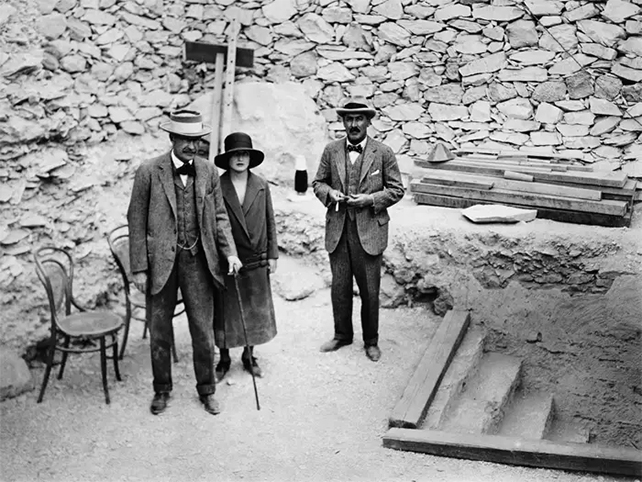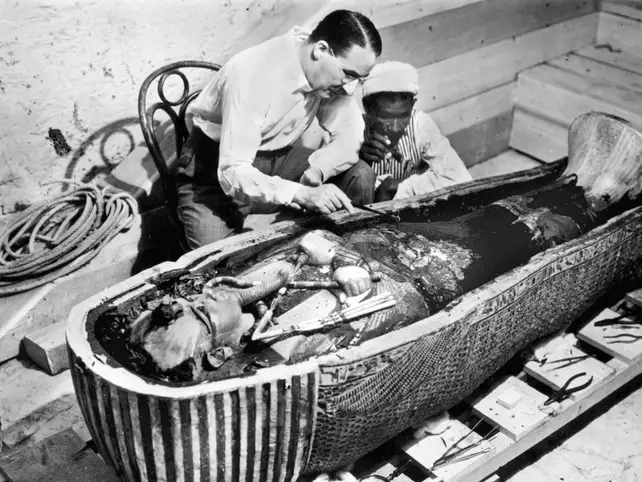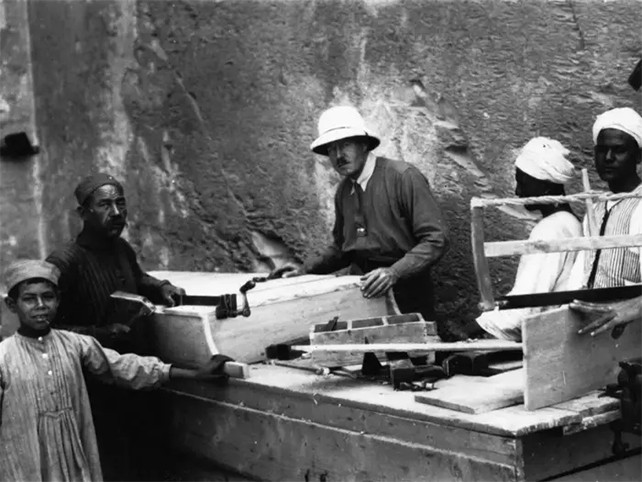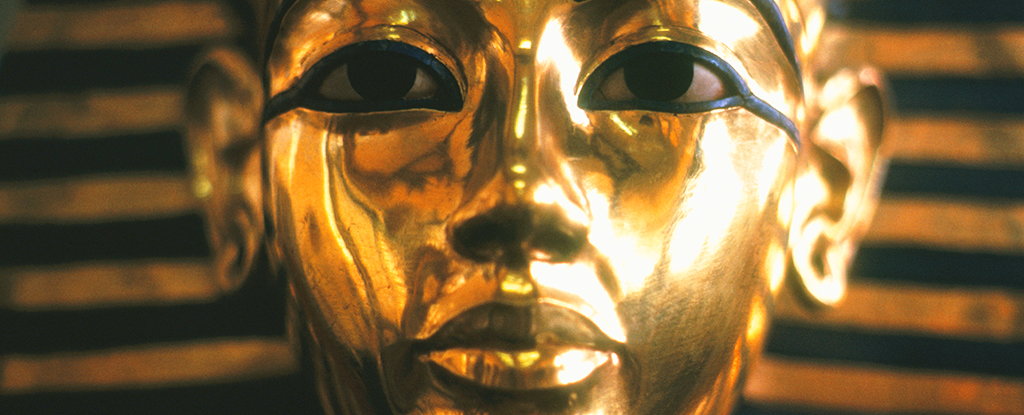In 1922, British archaeologist Howard Carter found what he'd spent the last six years searching for: King Tutankhamun's tomb. It was nestled in the Valley of the Kings near Luxor, Egypt and its treasures are still considered one of archaeology's most legendary finds.
But Carter's glory and fame came at a price: On the day Carter opened the tomb, a snake killed his canary. Some of the Egyptian staff regarded it as a "warning from the spirit of the departed King against further intrusion on the privacy of his tomb," the New York Times reported.
Rumors continued to swirl of a mummy curse that Carter had unleashed, especially when people associated with the excavation started dying.
However, as decades passed and more members of Carter's team died, scientists began to wonder if there was a much more mundane reason for the deaths.
The tomb of Tutankhamun and the first death attributed to the curse
In April 1923, George Herbert, 5th Earl of Carnarvon, lay feverish and coughing in a Cairo hospital. When he died on April 5, the lights in the city went out, LiveScience reported.
Back at his home in Hampshire, England, Lord Carnarvon's dog, Susie, died within a few hours of when he succumbed.
The NYT listed cause of death as pneumonia, triggered by an infected insect bite he had cut while shaving. But because he'd been present at the opening of Tutankhamun's tomb a few months prior, rumors of a curse started to swirl.

Lord Carnarvon, his daughter Lady Evelyn Herbert, and Howard Carter stand at the entrance to the tomb of Tutankhamun. (Harry Burton/Historica Graphica Collection/Heritage Images/Getty Images)
Lord Carnarvon's NYT obituary noted that even before he was ill, "there had been talk of curses laid by the ancient Egyptians, with mystic incantations, on any who dared disturb the sleep of a Pharaoh."
A day after Carnarvon's death, the paper quoted spiritualist and Sherlock Holmes creator Sir Arthur Conan Doyle as saying "a malevolent spirit may have caused Lord Carnarvon's fatal illness."
Around the same time, however, Sir Ernest A. Wallis Budge of the British Museum described the curse theories as "bunkum" to the NYT.
The many deaths connected to Tutankhamun's curse
Whispers of the curse continued when American financier George Jay Gould died in May 1923 of pneumonia, a few months after visiting the tomb, per JSTOR.
And Philip Livingston Poe, a relative of Edgar Allen Poe, also caught pneumonia a few months after visiting the tomb in 1923. His illness made the papers and was connected to the "Mummies' Curse," though he lived another 47 years.
When Richard Bethell, Howard Carter's secretary, died in 1929, various reports said he was either the ninth, tenth, or thirteenth person associated with the excavation to die.
In total, the number of deaths that newspapers attributed to the curse ranged from nine to over 20, depending on whether you include visitors to the tomb and excavators' relatives.
The wide range of deaths attributed to the curse included those killed in car accidents, shootings, a house fire, and those who took their own lives. Some had never visited the tomb and were merely related to someone who had.

Egyptologist Howard Carter, left, and an unidentified man, examine the sarcophagus of King Tutankhamun. (Apic/Getty Images)
Despite the Western media's voracious appetite for this mummy curse notion, it was very rare for Western newspapers to include Egyptians' deaths in their curse coverage. One of the few was Ali Kamel Fahmy Bey, who reportedly visited the tomb. In 1923, his wife shot and killed him at the Savoy Hotel in London, and a sensational trial followed.
But dozens of Egyptian laborers contributed physical and skilled labor to excavate Tutankhamun's tomb. Because Carter never named most of them in his notes, and they were rarely mentioned in the press, it's difficult to know how clearing millennials-old dust and debris affected their health.
The curse of the fungi?
As the decades passed, some scientists wondered if there was something deadly lurking in Tutankhamun's tomb: fungi.
Two physicians published a letter in The Lancet in 2003 stating that aspergillus, a common mold, could have sickened Lord Carnarvon.
Aspergillosis can cause coughing, shortness of breath, but it's more serious for those who have weakened immune systems. Lord Carnarvon originally began visiting Egypt after a serious car accident in 1903 damaged his lungs, which would have made him especially susceptible to the mold.
For a 2013 study, Harvard University researchers looked at brown spots found on the walls of Tutankhamun's tomb, which were present when Carter first unsealed the tomb. The microbiologists wanted to determine if fungi or other microbes were responsible for the spots and posed a health risk to visitors.

Egyptian carpenters prepare to reseal Tutankhamun's tomb with Howard Carter circa 1923. (Hulton Archive/Getty Images)
While the analysis found evidence of fungal communities and bacteria, they were no longer active and posed no threat to visitors or the paintings.
It's impossible to say if aspergillus or any other fungi contributed to Lord Carnarvon's or Gould's deaths. Today, archaeologists wear gloves, masks, and sometimes a disposable clothing barrier to protect themselves from mold and fungi, according to "Dangerous Places: Health, Safety, and Archaeology."
Perhaps the most mundane explanation of the curse comes from Frank McClanahan, a physician who treated Lord Carnarvon during his illness in Luxor. The deaths are a small number of the many who visited the tomb.
[T]here were archaeologists coming and going all the time from all parts of the world," he said in a 1972 interview. "If you took any large crowd of people and checked back later, you would find a certain percentage of deaths among them."



Recommended Comments
There are no comments to display.
Join the conversation
You can post now and register later. If you have an account, sign in now to post with your account.
Note: Your post will require moderator approval before it will be visible.